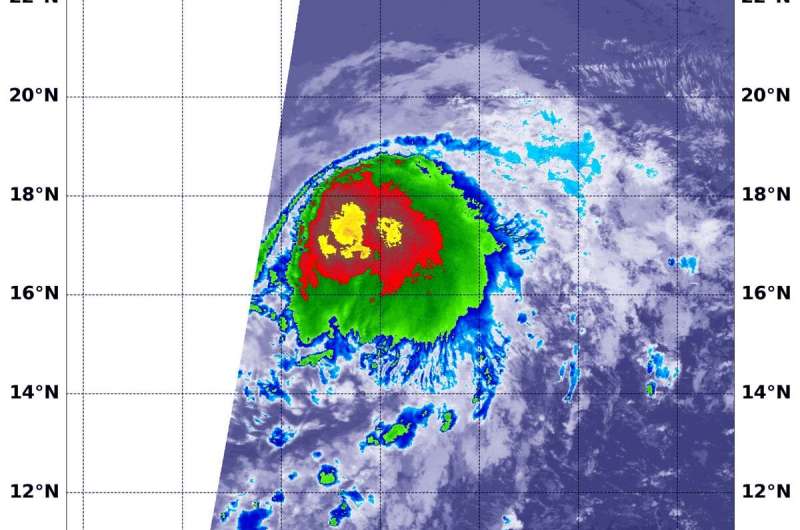NASA sees tropical storm Flossie headed to Central Pacific Ocean

Tropical Storm Flossie continues tracking in a westward direction through the Eastern Pacific Ocean and is expected to move into the Central Pacific Ocean later today, August 2.
NASA's Aqua satellite used infrared light to provide temperature information of clouds and sea surface. The strongest thunderstorms that reach high into the atmosphere have the coldest cloud top temperatures. Cloud top temperatures that cold indicate strong storms with the potential to generate heavy rainfall.
On August 2 at 6:10 a.m. EDT (1010 UTC), the Moderate Imaging Spectroradiometer or MODIS instrument that flies aboard NASA's Aqua satellite found those strongest storms around the center and in fragmented bands of thunderstorms circling the center, where cloud top temperatures as cold as minus 80 degrees Fahrenheit (minus 62.2 Celsius).
The National Hurricane Center (NHC) said, "Tropical Storm Flossie is a little more symmetric than it was last night. The center of the tropical storm appears to be more embedded within its central dense overcast."
At 11 a.m. EDT (5 a.m. HST/1500 UTC), the center of Tropical Storm Flossie was located near latitude 17.1 degrees north and longitude 137.8 degrees west. That's about 1,145 miles (1.845 km) east of Hilo, Hawaii. Flossie is moving toward the west-northwest near 17 mph (28 kph), and this general heading with a slight decrease in forward speed is expected through early next week. Maximum sustained winds are near 70 mph (110 kph) with higher gusts. The estimated minimum central pressure is 993 millibars.
On the forecast track, Flossie is forecast to cross into the central Pacific basin later today.
Gradual weakening is anticipated over the weekend and will likely continue through early next week.
Provided by NASA's Goddard Space Flight Center




















